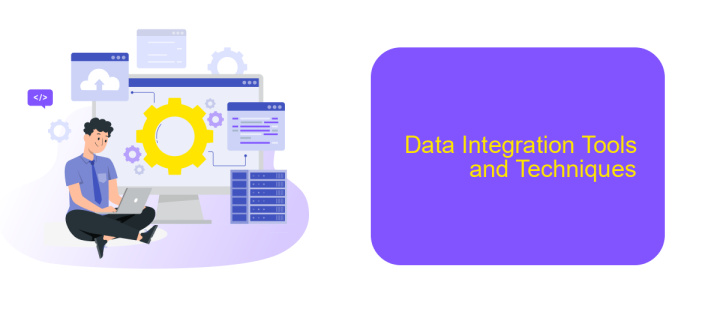Data Integration for Dummies
Data integration is a crucial process in today's data-driven world, enabling businesses to combine information from various sources into a cohesive, unified view. Whether you're a beginner or looking to refine your skills, this guide will walk you through the essentials of data integration, simplifying complex concepts and providing practical tips to help you harness the power of your data effectively.
Introduction to Data Integration
Data integration is the process of combining data from different sources to provide a unified view. It is essential for businesses to make informed decisions, enhance operational efficiency, and gain a competitive edge. With the growing volume and variety of data, effective data integration has become more critical than ever.
- Combining data from disparate sources
- Ensuring data consistency and accuracy
- Facilitating real-time data access
- Enhancing data quality and usability
To streamline data integration, various tools and services are available. ApiX-Drive, for instance, offers a user-friendly platform that simplifies the integration process. It allows users to connect multiple applications and automate data workflows without needing extensive technical knowledge. By leveraging such tools, businesses can achieve seamless data integration, ensuring that their data is always accurate, up-to-date, and ready for analysis.
Benefits of Data Integration

Data integration offers numerous benefits, making it a critical component for modern businesses. By consolidating data from various sources, organizations can achieve a unified view of their operations, leading to more informed decision-making. This holistic perspective enables companies to identify trends, uncover insights, and make strategic adjustments swiftly. Additionally, data integration reduces redundancy and inconsistencies, ensuring that all departments work with accurate and up-to-date information, which enhances overall efficiency and productivity.
Furthermore, integrating data can significantly streamline processes and improve collaboration among teams. Tools like ApiX-Drive facilitate seamless data integration by automating the transfer of information between different applications and systems. This not only saves time but also minimizes the risk of human error. With such services, businesses can easily set up integrations without the need for extensive technical expertise, allowing them to focus on core activities and drive growth. Ultimately, data integration fosters a more agile and responsive organization, capable of adapting to changing market conditions and customer needs.
Challenges of Data Integration

Data integration is a complex and multifaceted process that presents several challenges to organizations. These challenges can hinder the seamless merging of data from disparate sources, affecting the overall efficiency and accuracy of data-driven decisions.
- Data Quality: Inconsistent data formats, missing values, and duplicate entries can compromise the integrity of integrated data.
- Scalability: Integrating large volumes of data from multiple sources can strain existing infrastructure and require significant resources.
- Security: Ensuring data privacy and compliance with regulations like GDPR can be challenging when integrating sensitive information.
- Compatibility: Different data sources may use various formats and technologies, making seamless integration difficult.
- Real-time Integration: Achieving real-time data integration requires sophisticated tools and can be resource-intensive.
To address these challenges, organizations can leverage integration platforms such as ApiX-Drive. This service simplifies the process by providing automated workflows, ensuring data consistency, and facilitating real-time data syncing. By using such tools, companies can overcome common data integration hurdles and enhance their data management practices.
Data Integration Tools and Techniques

Data integration is a crucial process for businesses aiming to consolidate information from various sources to create a unified view. This process involves combining data residing in different sources and providing users with a consistent view of these data. Effective data integration can significantly enhance decision-making and operational efficiency.
There are several tools and techniques available to facilitate data integration. These tools can automate the process, reduce errors, and save time. One such tool is ApiX-Drive, which offers an intuitive interface for connecting various applications and automating data flow between them.
- ETL (Extract, Transform, Load) Tools
- Data Warehousing Solutions
- API Management Platforms
- Data Virtualization Tools
- iPaaS (Integration Platform as a Service)
ApiX-Drive stands out as a versatile iPaaS solution, enabling seamless integration between multiple services without requiring extensive technical knowledge. By leveraging such tools, businesses can ensure that their data is accurate, up-to-date, and easily accessible, ultimately driving better business outcomes.
Best Practices for Data Integration
Effective data integration begins with a clear understanding of your data sources and the specific needs of your organization. Start by identifying and cataloging all relevant data sources, ensuring they are clean and well-documented. Establish a robust data governance framework to maintain data quality, consistency, and security. Regularly audit and update this framework to adapt to changing business requirements and data landscapes.
Utilize automated tools and services like ApiX-Drive to streamline the integration process. ApiX-Drive enables seamless connections between various applications and platforms, reducing manual effort and minimizing errors. Leverage its capabilities to automate data synchronization, transformation, and loading, ensuring real-time data availability. Additionally, prioritize scalability and flexibility in your integration strategy to accommodate future growth and evolving data needs. Consistently monitor and optimize your integration workflows to enhance performance and reliability.
FAQ
What is data integration?
Why is data integration important for businesses?
What are the common challenges in data integration?
How can businesses automate data integration?
What should businesses consider when choosing a data integration tool?
Apix-Drive is a universal tool that will quickly streamline any workflow, freeing you from routine and possible financial losses. Try ApiX-Drive in action and see how useful it is for you personally. In the meantime, when you are setting up connections between systems, think about where you are investing your free time, because now you will have much more of it.

